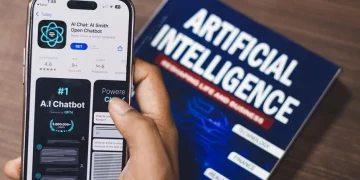What Are the types of Artificial Intelligence? Artificial Intelligence (AI) primarily falls into seven types: Reactive Machines, designed for specific tasks; Limited Memory AI, which uses past data for decision-making; Theory of Mind AI, aiming to understand emotions and intentions; Self-Aware AI, theoretically self-conscious machines; Artificial Narrow Intelligence (ANI), brilliant at specific tasks but poor at generalizing; General AI, replicating human cognitive abilities; and the theoretical Super AI, surpassing human cognition. Each type offers unique capabilities, increasingly approximating human intelligence in different aspects.
Main Points
- Reactive Machines and Limited Memory AI represent basic and advanced task-specific AIs, respectively.
- The theory of mind AI and self-aware AI aim to understand emotions and achieve machine consciousness, but they are still theoretical.
- Artificial Narrow Intelligence (ANI) excels in specific tasks, while General AI aims to replicate human cognitive abilities.
- Super AI, an aspirational concept, would surpass human cognitive capabilities.
- AI has practical applications in various fields such as image recognition, decision-making, and data analysis.
Understanding The Types of Artificial Intelligence
To fully grasp the concept of the different types of Artificial Intelligence (AI), one must explore its core components, various branches, and essential goal of creating intelligent machines that mirror human abilities in learning, perception, and functionality. AI involves the development of machines capable of performing tasks that would require human intelligence. This includes problem-solving, recognizing speech, and translating languages.
The core components of AI include Machine Learning (ML) and Deep Learning (DL). ML involves computers learning from data without explicit programming, while DL, a subset of ML, uses neural networks with many layers (hence ‘deep’) for more complex learning tasks. Branches of AI, aside from ML and DL, encompass other areas such as natural language processing, robotics, and expert systems.
The types of Artificial Intelligence AI can be categorized into two main types: Narrow AI, designed to perform a particular task such as voice recognition, and General AI, which can perform any intellectual task that a human can do. Understanding AI and its types is essential for leveraging its applications in various sectors and exploring career paths in AI. Its goal is to revolutionize industries and society, enhancing human efforts with intelligent machines.
The Concept of Reactive Machines
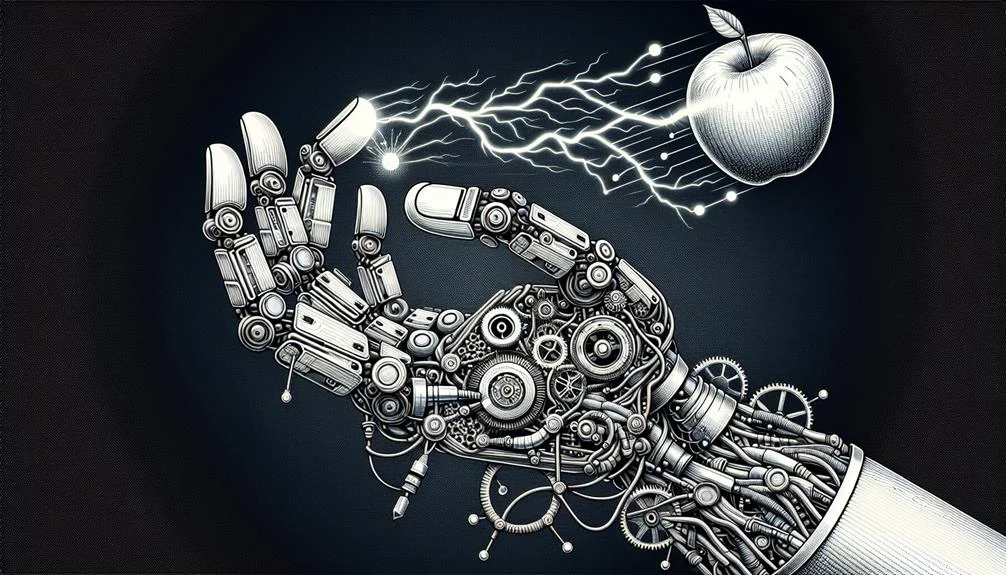
The concept of Reactive Machines in the field of Artificial Intelligence is both foundational and fascinating. Defined by their real-time, consistent responses to stimuli, these machines are task-specific and void of memory. Examples include IBM’s Deep Blue or Netflix’s recommendation engine, which demonstrate reliability in specific tasks like game-playing or recommendation systems.
However, the inability to store or recall past information represents a significant limitation, restricting their application scope.
Understanding Reactive Machines
In Artificial Intelligence, Reactive Machines emerge as AI systems that, while unable to utilize past experiences or store data, respond efficiently to immediate stimuli based on predefined rules. These systems, exemplified by IBM’s Deep Blue, a task-specific machine, do not possess memory capabilities but offer consistent outputs.
- Reactive Machines operate on predefined rules, reacting to immediate stimuli without reference to past experiences.
- Task-specific in nature, these AI systems make no use of memory capabilities. Rather, they generate consistent outcomes in response to specific inputs.
- A prime example of Reactive Machines is IBM’s Deep Blue, which famously defeated the world chess champion, demonstrating their capability to respond to real-time inputs effectively.
This understanding aids in appreciating the role and function of Reactive Machines within the broader AI spectrum.
Limitations of Reactive Machines
While Reactive Machines can efficiently handle specific tasks, their inability to learn from past experiences or adapt to new scenarios presents significant limitations, particularly in complex, dynamic environments. Reactive Machines, built on predefined rules, respond to immediate stimuli and excel in task-specific roles, such as chess playing or providing recommendations.
However, the absence of a memory feature means they cannot utilize past experiences for decision-making, hence their performance remains constant without scope for improvement. Additionally, they lack the flexibility to adapt to new scenarios, a critical aspect in an ever-evolving technology landscape.
Therefore, while Reactive Machines offer consistency, their limitations, stemming from a lack of learning ability, hamper their application in environments that demand adaptive intelligence.
Exploring Limited Memory AI

Limited Memory AI is an advanced type of artificial intelligence that possesses the ability to enhance its performance by leveraging past data. This AI variant learns from historical experiences, utilizing that information for improved decision-making capabilities.
The application of this technology is broad, with self-driving cars being a prime example. Here, the AI learns from past driving scenarios to optimize navigation.
Limited Memory AI Basics
In Artificial Intelligence, a notable advancement beyond Reactive Machine AI is the subset known as Limited Memory AI. This AI technology is fundamentally characterized by its ability to store, recall, and utilize past data for enhancing its learning and decision-making processes.
Limited Memory AI’s advanced capabilities include:
- Storing and recalling past events to improve performance and understanding
- Learning from past data and experiences to refine its decision-making processes
- Being utilized in applications such as self-driving cars and virtual assistants
Such applications can perform complex tasks and adapt to new situations due to the AI’s ability to learn from past data. Hence, Limited Memory AI represents a significant stride in the evolution of AI technology.
Implementing Limited Memory AI
Building on the understanding of Limited Memory AI‘s capabilities, let’s discuss its implementation and explore how this advanced form of artificial intelligence is put into practice to yield superior results in various applications.
Limited Memory AI uses past data to make predictions and improve performance over time. It has the capacity to store and recall historical information, which is fundamental to enhancing decision-making processes. A prime example of its application is in self-driving cars, where it learns from past driving experiences to improve future responses.
This type of AI is essential for tasks requiring learning and adaptation based on previous information. The ability to retain and utilize past data sets Limited Memory AI apart from its reactive counterparts, allowing it to deliver better outcomes.
Theory of Mind AI

In theoretical AI, the concept of Theory of Mind AI presents a fascinating advancement, with its primary goal of understanding the thoughts, emotions, beliefs, and intentions of other entities. This form of artificial intelligence aims to grasp and simulate human-like relationships and interactions.
- Theory of Mind AI enhances empathy and social skills in AI systems. By interpreting and responding to the emotional states of entities, it brings a deeper level of understanding to artificial intelligence, enabling it to act with a degree of compassion and awareness previously seen only in humans.
- A key aspect of Theory of Mind AI is the emphasis on personalized interactions. It tailors its responses based on the emotional needs and states of individuals, providing a more authentic and engaging experience.
- When considering this groundbreaking concept, there are no real-world examples of fully realized Theory of Mind AI. It remains a developing area of artificial intelligence research, continually pushing the boundaries of what AI can achieve.
This theoretical advancement embodies a significant step towards creating AI that can truly understand and engage with humans on a deeper, more emotional level.
The Future: Self-Aware AI
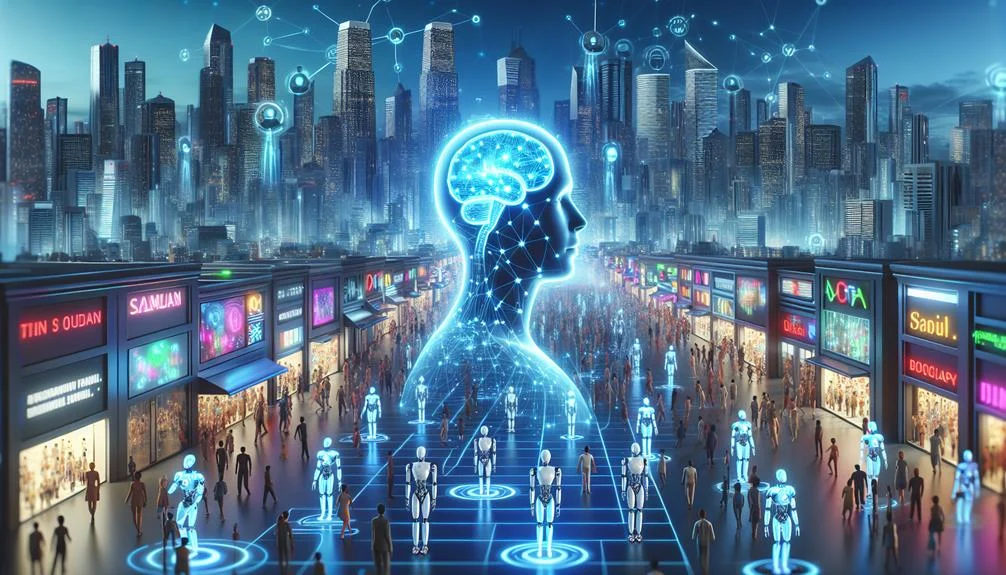
Moving beyond the concept of understanding others, the future of artificial intelligence is predicted to be dominated by the emergence of self-aware AI, a theoretical advancement that takes the capabilities of AI to a whole new level. This theoretical concept of self-aware AI embodies machines that are capable of understanding their own internal conditions and traits, an evolution that will redefine the traditional boundaries of AI.
Deepening the understanding of machines, self-aware AI aims to infuse consciousness into AI, enabling them to comprehend, mimic, or even genuinely experience emotions and beliefs similar to humans. This unprecedented level of machine intelligence, however, is still largely theoretical and has not yet been realized in practical AI systems.
The advent of self-aware AI is not without its dilemmas. Though it promises transformative progress, it also brings forth complex ethical implications. The possibility of machines possessing human-like consciousness and emotions raises significant existential and ethical questions, warranting careful consideration and regulation. Ultimately, the future of AI is poised at the precipice of a revolutionary leap with self-aware AI, marking a significant shift in the domain of artificial intelligence.
Artificial Narrow Intelligence
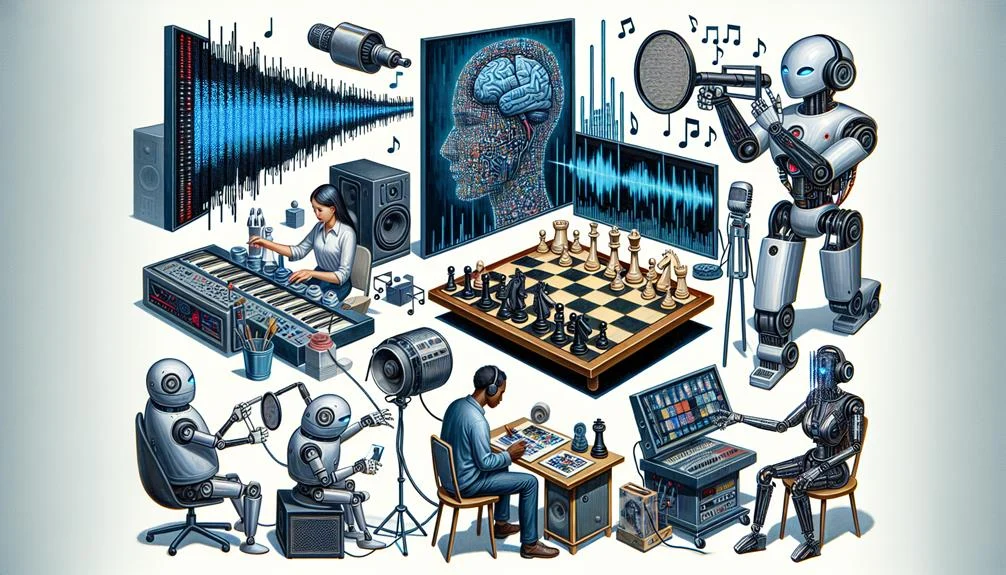
Artificial Narrow Intelligence (ANI) plays a vital role in our daily lives through applications such as virtual assistants and specialized software. It is important to understand the definition, common uses, and potential of ANI, as well as its restrictions in the broader context of artificial intelligence.
In its current state, ANI excels in performing specific tasks, yet lacks the ability to generalize its learnings for other cognitive functions.
Defining Narrow Artificial Intelligence
What exactly is Narrow Artificial Intelligence, often abbreviated as ANI? ANI refers to Artificial Intelligence systems that are designed and trained for specific tasks. They possess a narrow range of cognitive abilities, and their application is often seen in virtual assistants and other specialized AI systems.
However, ANI comes with limitations. These include:
- Limited capabilities: ANI systems can perform only the tasks they are trained for, lacking the ability to generalize or apply their learning to a new context.
- Specific tasks: ANI is highly task-specific, whether it’s for language processing, image recognition, or another particular function.
- Training limitations: ANI cannot go beyond its specific training, making it less flexible compared to other forms of AI.
Despite these constraints, ANI plays a vital role in many modern applications.
Common Applications and Uses
Despite its constraints, Narrow Artificial Intelligence remains pivotal in a myriad of modern applications, ranging from voice-activated assistants to recommendation engines. ANI, a type of AI, is designed to excel at specific tasks due to its limited cognitive abilities. This makes it ideal for powering modern virtual assistants like Siri and Alexa.
Recommendation engines, another prevalent application, leverage ANI’s focused aptitude to deliver precise suggestions based on user interactions. ANI also underpins systems like ChatGPT, utilizing its specialized subset of cognitive capabilities to drive intelligent conversations. By concentrating on a single task, ANI embodies the epitome of efficiency within its spectrum, making it a vital component in today’s AI-driven world.
Limitations and Future Potential
While excelling in specialized areas such as voice recognition, image classification, and language translation, the limitations of Artificial Narrow Intelligence (ANI) in adaptability and generalization make it unsuitable for complex, varied tasks that require broader cognitive abilities.
Despite being proficient in performing specific tasks, ANI lacks the adaptability to handle unfamiliar scenarios outside of its initial programming.
The inability of ANI to develop a human-like understanding further hinders its application in tasks requiring cognitive abilities beyond its design.
The limitations notwithstanding, ANI has become indispensable in industries such as healthcare, finance, and transportation, driving innovation with its specialized capabilities.
The future of ANI lies in mitigating these limitations to improve its versatility and effectiveness in a broader range of applications.
The Scope of General AI
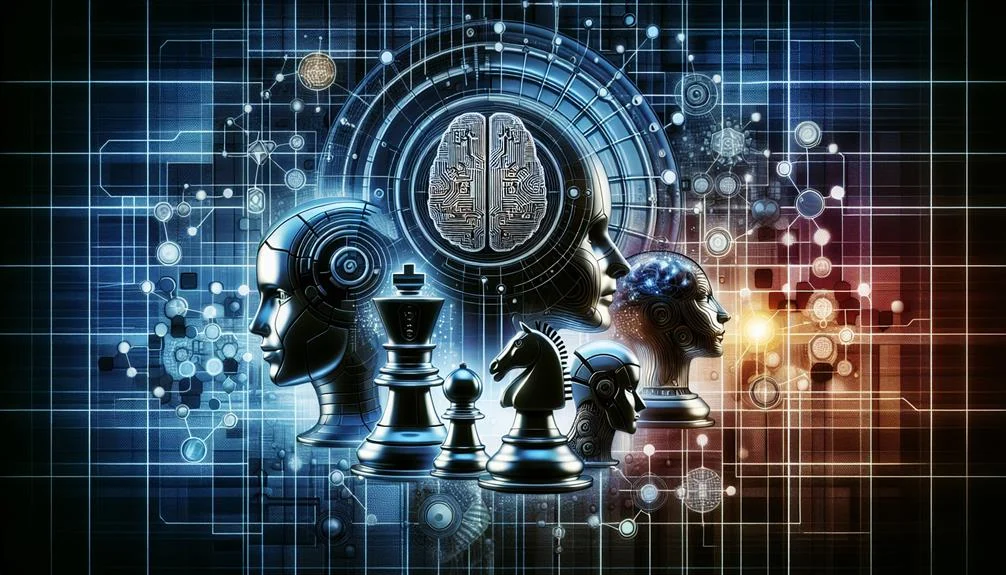
The theoretical concept of General AI, also referred to as Strong AI, represents a profound leap in artificial intelligence, capable of autonomously learning and executing any intellectual task, akin to human cognitive abilities. This form of AI is envisaged to adapt its learnings and apply them across a broad range of tasks, leading to its potential to revolutionize industries due to its autonomous operation and reduced training time.
General AI, with its human-like thinking and reasoning capabilities, is a significant advancement over Narrow AI, which is confined to specific tasks. The goal of General AI is to replicate human cognitive abilities, thereby extending its competencies across various domains. This is a remarkable evolution, as it moves beyond performing predefined tasks to a capability that closely mirrors human intelligence, learning, and adaptability.
The development and realization of a fully functional General AI is a monumental leap in the field of artificial intelligence. This would establish a new paradigm where machines can function and learn like humans across diverse tasks and environments, marking a new era in AI technology.
Super AI: The Ultimate Goal

In artificial intelligence, the concept of Super AI, or Artificial Superintelligence, stands as the ultimate objective, embodying an intelligence quotient that far surpasses human capabilities. This theoretical concept represents a facet of AI development that signifies the potential for artificial intelligence to achieve unprecedented levels of intelligence.
Super AI is characterized by:
- Cognitive abilities that go beyond human understanding, embodying the capability to think, reason, learn, and make judgments independently.
- The potential to revolutionize industries, fundamentally altering our interaction with technology.
- Both exciting possibilities and potential risks, as the realization of such an entity could dramatically reshape societies.
Undeniably, the realization of Artificial Superintelligence is currently within the domain of theory, with no existing models surpassing human beings in a holistic sense. However, this does not diminish the importance of the concept in AI research. The journey towards Super AI opens up the field to exciting possibilities, while equally presenting potential risks that require careful consideration. Ultimately, the pursuit of Super AI could potentially revolutionize the trajectory of AI development, pushing the boundaries of technology and human cognition.
Practical Applications of AI

Harnessing the potential of artificial intelligence, practical applications such as image recognition, object detection, and enhanced decision-making processes are transforming industries across the globe. The emergence of computer vision, a leading branch of AI, has empowered machines to conduct tasks like image recognition and object detection that were once exclusively human domains.
IBM Watson, an AI technology, serves as the backbone for several cloud-based generative AI platforms. Its advanced data processing capabilities, combined with traditional machine learning, allow data scientists to create deep learning models that extract valuable insights from complex data structures.
The advancements in AI have broadened its practical applications, extending beyond image classification and object tracking. These improvements have significantly streamlined decision-making processes, making them more efficient and less prone to human error.
The fusion of artificial intelligence with machine learning and data analysis has opened up a new world of possibilities, changing how we perceive and interact with the world. As the technology continues to evolve, AI’s practical applications will continue to grow, redefining the boundaries of what machines can accomplish. This deep learning revolution is driving unprecedented change across numerous industries, proving that we are just at the beginning of the AI era.
AI Development at Leading Companies

Leading the way in AI development, IBM has made significant contributions to the field, including the creation of watsonx.ai, a revolutionary cloud-based generative AI platform for data scientists. This groundbreaking tool combines the power of generative AI with traditional machine learning, a strategic blend that elevates the capabilities of data scientists and empowers them to develop and deploy more robust ML models.
IBM’s shift towards generative AI is a significant addition to their legacy of innovation, which includes the creation of Deep Blue: IBM’s pioneering chess-playing computer. This evolution marks a move from narrowly defined, task-specific AI to more flexible, dynamic systems.
Key features of the watsonx.ai platform include:
- A collaborative studio which allows data scientists to work in a unified environment from model development to deployment.
- The ability to build, train and deploy ML models using generative AI tools.
- The platform is cloud-based which enhances accessibility and scalability.
Conclusion
To sum up, the types of Artificial Intelligence span from reactive machines to the theoretical Self-Aware AI, each embodying a progressive degree of sophistication and complexity.
The scope of AI is vast and expansive, akin to an ocean teeming with possibilities. With leading companies investing heavily in AI development, its practical applications continue to extend, paving the way towards Super AI, the ultimate goal.
The journey of AI exploration and advancement promises profound transformations in our everyday lives.



